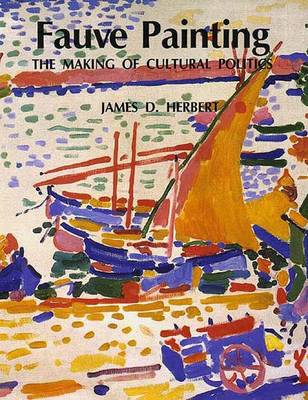Fauve paintings, with their bold distortion of forms and exuberant colour, created great controversy when they were first exhibited in the early years of the 20th century. In this account of Fauvism, James Herbert examines significant paintings of the most famous members of the school - Matisse, Derain and Vlaminck - and shows that what appeared to be their artistic simplicity in fact disguised an involvement in many of the pressing issues of the day. Herbert examines key paintins that exemplify the central themes of Fauvism, analyzing them in the light of the political-cultural debates of the time and relating them to other visual and verbal texts - from political tracts and art-critical writings to tourist postcards and travel guidebooks. Herbert argues that Fauve pictures defined an aesthetic of the landscape that facilitated the cultural expansion of Parisians into the suburbs as residents and into the south of France and overseas as tourists. Matisse's pictures of nudes both articulated a gendered dynamic vision and contributed to the colonial project of knowing Africa.
And Fauve paintings, by combining the "grande tradition" of classical painting with the legacy of Impressionism and post-Impressionism, fused tradition and innovation to portray a national culture. In examining the paintings in their broader contexts, Herbert establishes how they redefined and reconfigured the artistic traditions that they inherited and how they dissimulated politics as art. This book should be of interest to art historians, cultural historians and those involved in the investigation of the politics of representation.
- ISBN10 0300050682
- ISBN13 9780300050684
- Publish Date 25 November 1992
- Publish Status Active
- Out of Print 22 September 2006
- Publish Country US
- Imprint Yale University Press
- Format Hardcover
- Pages 192
- Language English
